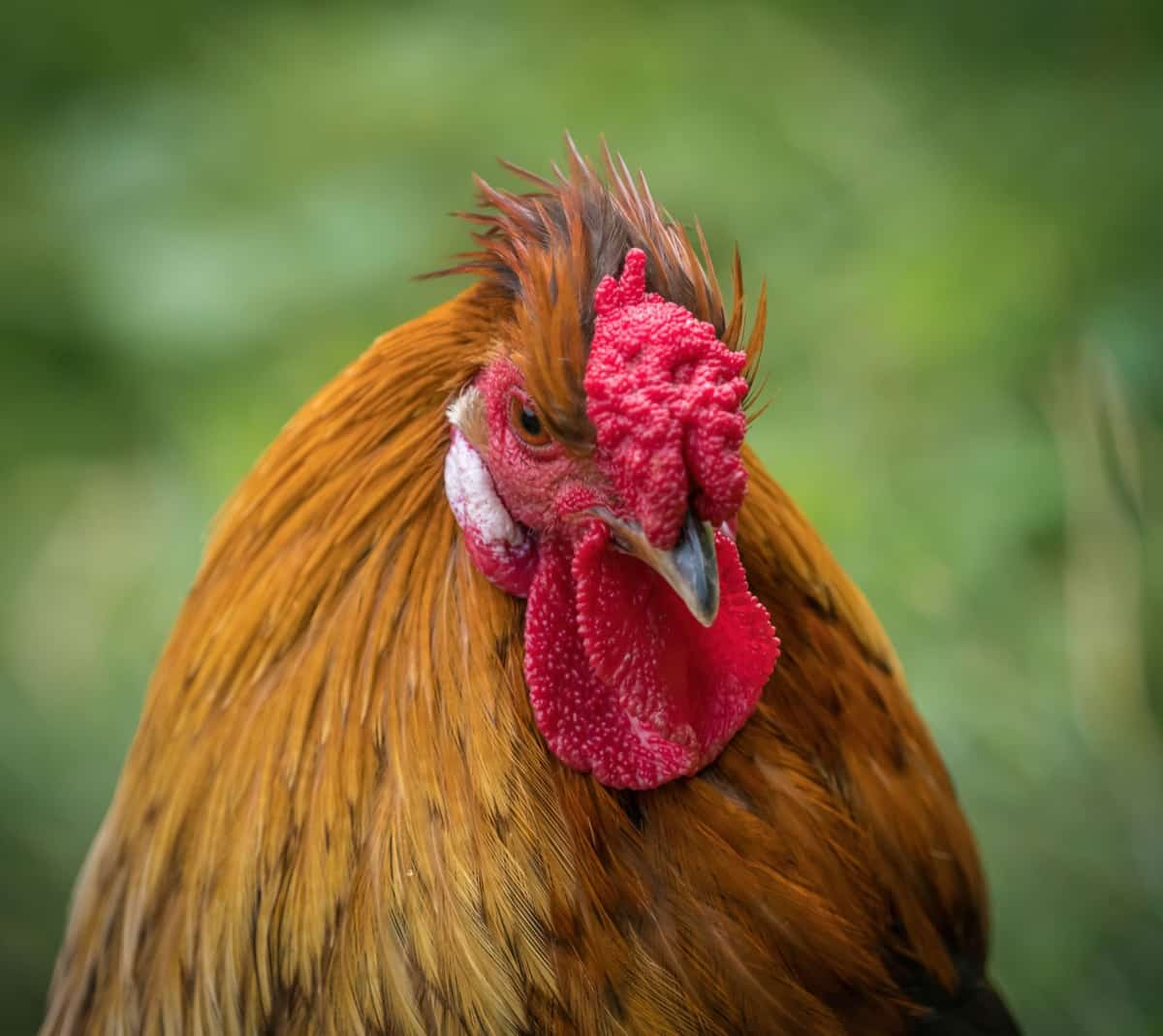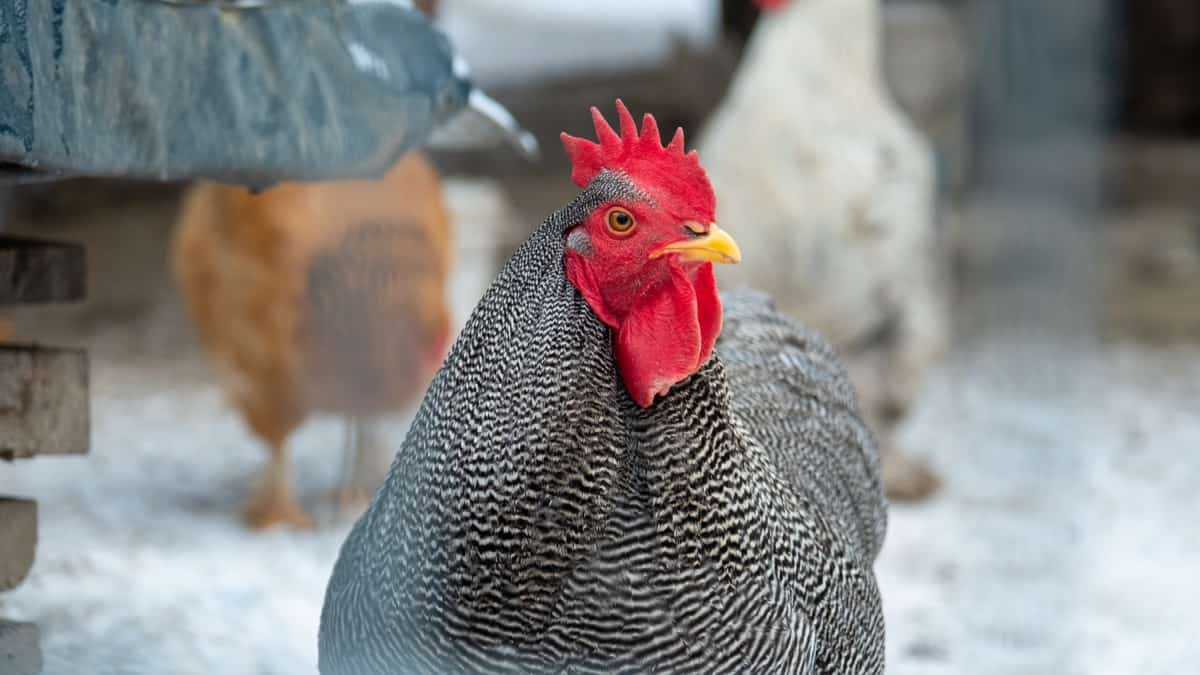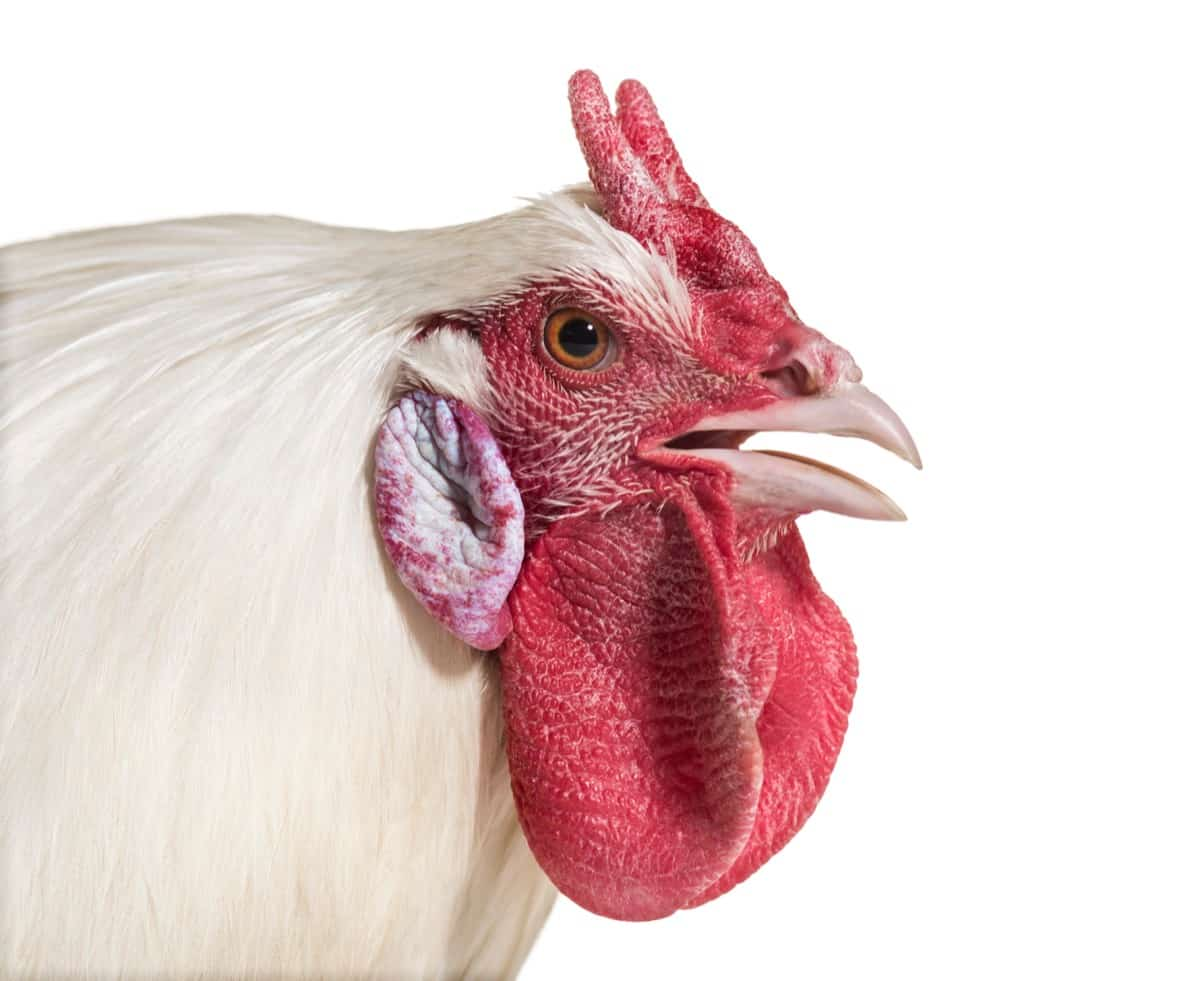These vibrant, peculiar growths on a chicken’s head are more than just decorative accessories. They serve a main purpose in keeping our feathered friends cool and healthy. Let’s check out more information on chicken combs below.

Everything You Need to Know About Chicken Combs
What Are Chicken Combs?
Chicken combs are fascinating and distinctive features that sit proudly atop a chicken’s head. You may have noticed these vibrant, red growths when observing your flock. Chicken combs are essentially the equivalent of our cooling system. They play a vital role in regulating a chicken’s body temperature.
Purpose of Chicken Comb
The primary function of the chicken comb is to help keep them cool during hot weather conditions. Chickens rely on their comb as a natural radiator. It helps dissipate excess heat and keeps them comfortable in scorching temperatures. Additionally, when frostbite becomes a concern for poultry owners during harsh winters, smaller combs benefit the birds by having less surface area exposed to extremely cold temperatures. This reduces the risk of frostbite and ensures their well-being during chilly months.
These unique breeds may have smooth heads instead of a prominent comb. Instead of relying on their combs to regulate body temperature, these chickens use other methods, such as panting and finding shade to stay cool in hot weather. In addition to its cooling function, a healthy chicken comb can also indicate overall well-being. A vibrant color and firm texture often signify good health in a chicken. However, if your chicken’s comb turns pale or droopy, it could indicate underlying health issues such as mites or lice.
How Do You Care for A Chicken Comb?
- Caring for a chicken’s comb is important to keep your feathered friends healthy and happy. While the comb may seem like just another part of their appearance, it is crucial to their overall well-being.
- Firstly, regular observation is key. Take the time to examine your chickens’ combs daily closely. Look for any signs of discoloration or abnormalities, such as swelling or lesions. These could be indicators of underlying health issues that need to be addressed.
- Keeping the coop clean is essential in maintaining a healthy chicken comb. A dirty environment can lead to bacterial growth, which can potentially cause infection in their combs and other sensitive areas.
- Providing proper ventilation is another important factor in caring for their combs. Adequate airflow helps regulate temperature and prevents excessive heat buildup, reducing the risk of heat stress or other related problems.
- Additionally, ensuring your chickens have access to fresh water is crucial for maintaining hydration levels and preventing dehydration-related complications that could affect their combs.
- Protecting them from extreme weather conditions is vital. Harsh winters can lead to frostbite on combs if they are not adequately protected with insulation or heated areas during cold spells.
Tips To Treat a Chicken with a Pale Comb?
One of the common issues that chicken owners may encounter is a chicken with a pale comb. It’s important to determine the cause of the paleness. One possibility is mites or lice infestation. These parasites can weaken and damage the comb, causing it to lose its vibrant color. Treating your chickens for these pests using appropriate medications or natural remedies can help restore their comb’s health.
Another reason for a pale comb could be poor nutrition or dehydration. Ensure your chickens have access to clean water and a good diet rich in vitamins and minerals. Additionally, extreme weather conditions such as excessive heat or cold can also affect the color and condition of their combs. Provide shelter from extreme temperatures and monitor their living environment closely.
In case you missed it: Protecting Your Flock: A Step-By-Step Guide to Chicken Parasites

Types Of Chicken Combs
- Chicken combs come in various shapes and sizes, each with unique characteristics. The walnut comb is named for its resemblance to the nut, featuring multiple lobes and a smooth surface. It is commonly found in heritage breeds like Silkies and Cochins.
- Strawberry combs are small and compact, resembling the shape of a strawberry. They are typically seen in bantam breeds such as Sebrights and Dutch bantams.
- The V-shaped comb is exactly what it sounds like – a comb that forms the letter V on top of the chicken’s head. It can be quite striking and is often seen in gamefowl breeds.
- Rose combs have tightly packed folds that give them a rose-like appearance. This comb type is commonly found in Mediterranean breeds like Leghorns and Anconas.
- Single combs are one of the most common types, consisting of a flat ridge with several points along its length. Many popular backyard chicken breeds, including Rhode Island Reds and Plymouth Rocks, have single combs.
- Buttercup combs have an intricate arrangement of small points that resemble petals around a central point. They can be found in some Mediterranean or European heritage breeds.
- Carnation combs are similar to buttercup combs but have larger points resembling carnation flower petals. Some Polish breed chickens exhibit this type of comb.
- Cushion combs are round-shaped with thick padding on top; they appear almost pillow-like! These fluffy-looking combs can be seen on certain Asiatic or heavy-breed chickens such as Brahmas or Cochins.
Chicken Comb Diseases and Treatment
- Knowing chicken comb diseases and their treatments is important to keep your chickens happy and healthy. One common disease that can affect chicken combs is Fowl Pox. This viral infection causes scabby lesions on the comb, which can be painful for the bird. Treatment usually involves isolating affected birds and providing supportive care until they recover.
- Fowl Cholera is another disease that can impact chicken combs. It is caused by a bacterium called Pasteurella multocida, primarily affecting the respiratory system. Infected chickens may develop swollen, discolored combs as a result. Antibiotics are typically used to treat this bacterial infection.
- Newcastle Disease is highly contagious and can cause severe respiratory symptoms in infected birds. Although not specifically targeting the comb, it can indirectly impact its health due to overall illness in the bird. Vaccination plays an essential role in preventing this disease.
- Frostbite is a risk during cold winter months when temperatures drop below freezing. The exposed skin on chicken combs is susceptible to frostbite, leading to tissue damage or even loss of comb tips or entire comb if severe enough.
- Infectious Bursal Disease (IBD) primarily affects young chickens between three weeks and three months old but does not directly target their combs either; however, its impact on overall health may indirectly affect comb condition.
- Understanding these diseases and implementing proper prevention measures such as vaccination protocols, and providing shelter from extreme weather conditions like frostbite-inducing cold temperatures or humid environments that promote bacteria growth will help ensure your flock stays healthy.
How To Keep Chicken’s Comb Healthy?
- Provide proper nutrition: Ensure your chickens have a balanced diet with vitamins and minerals. A nutritious diet will help promote good circulation, supporting a healthy comb.
- Clean and dry environment: Maintain clean and dry living conditions for your chickens. Moisture can contribute to the bacteria or fungi growth, leading to infections on the comb. Regularly clean out their coop and bedding materials to prevent any buildup of dirt or moisture.
- Protect from extreme temperatures: Extreme cold weather can cause frostbite on chicken combs, especially larger ones with more surface area exposed to the elements. Consider providing extra insulation in winter months or using petroleum jelly as a protective barrier against freezing temperatures.
- Monitor for signs of parasites: Regularly check your chickens for signs of mites, lice, or other parasites that could infest their combs. These pests can cause irritation and damage the comb surface if left untreated.
- Promote good blood circulation: Encourage exercise by providing ample space for your chickens to roam freely during the day. Physical activity helps improve blood flow throughout their bodies, including the comb area.
- Regular health checks – Perform regular health checks on your flock, paying particular attention to any changes in the color or texture of their combs. Catching potential issues early allows you to take prompt action, preventing further complications.
In case you missed it: Delaware Chicken: Care, Egg Laying, and Pictures

Conclusion
These combs are important for chickens, acting as their cooling system. From their vibrant colors to unique shapes, chicken combs are fascinating to observe and serve important functions. Caring for a chicken’s comb involves regular observation and proper hygiene practices.
- Ultimate Guide to Ossabaw Island Hog: Breeding, Raising, Diet, and Care
- Ultimate Guide to Juliana Pig: Raising Facts, Size, Diet, Care, and Lifespan
- Raising Lleyn Sheep: Disadvantages, Price, Uses, Characteristics, and Care
- Ultimate Guide to Meishan Pig: Breed Facts, Breeding, Raising, and Care
- Ultimate Guide to Teacup Pigs: Raising, Diet, Lifespan, Cost, and Care
- Guide to Raising Poll Dorset Sheep: Facts, Profile, Characteristics, Uses, and Care
- Ultimate Guide to Bighorn Sheep: Characteristics, Diet, Lifespan, Breeding, and Lifecycle
- Ultimate Guide to Raising Katahdin Sheep: Farming Facts, Breed Profile, Uses, and Care
- Ultimate Guide to Raising Oreo Cows: Belted Galloways Farming Facts, Profile, Uses, and Care